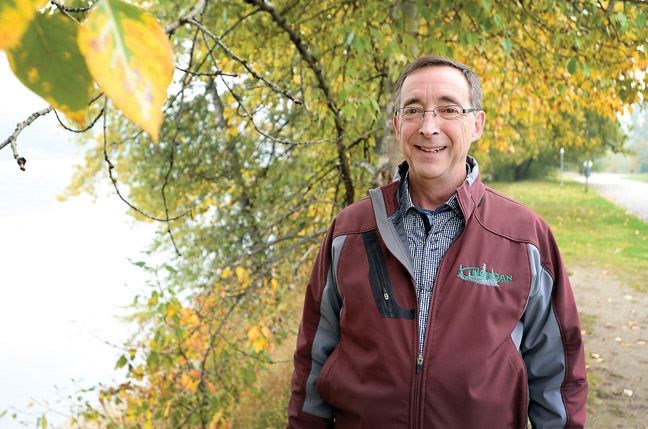Many years ago a nine-year-old boy found an arrowhead on the banks of the Nechako River. It launched a lifelong love of archeology and eventually led Normand Canuel back home where he's embarked on a project with the City of Prince George to create a complete map of historically significant sites.
There are about 18 known archaeological sites in city limits and Canuel expects that to more than double by the time Norcan Consulting is finished creating Prince George's first-ever archeological risk framework tool.
The Prince George-based consulting firm won the $70,000 contract in the summer with a dual goal of documenting and preserving local heritage to help inform planning decisions.
"It's easy to manage for the known, but the unknown's very difficult," said Canuel, calling the predictive model a critical tool.
"It's a tool that we can use to protect the unknown resource as best as possible."
Most often, discoveries emerge from developments. In 2007 a project to twin the Simon Fraser Bridge found an 8,000-year-old site, with a 14-centimetre-long bi-face arrowhead, a fire-pit hearth and cultural depressions.
When the model is done at the end of March, Prince George will be one of only a handful of municipalities to have the tool, said city project manager Andrea Byrne.
It's more common to see that type of mapping in forest districts, and both Quesnel and Langford have versions.
"From a land use planning perspective we can act as a middle person for development with the archeology branch," said Byrne, adding it will help protect the sites and make sure the city keeps up with its capital project timelines.

"So much of the history in Prince George is unknown, most of it's buried and hard to identify."
In a statement to the city Lheidli T'enneh Chief Dominic Frederick said he's pleased Prince George is taking the initiative to preserve cultural heritage.
"These sites are extremely important to Lheidli T'enneh and require the appropriate protection as laid out by the provincial archeology branch," said Frederick.
When reached by phone Frederick didn't have any further comment.
As part of its research the firm consulted with Lheidli T'enneh, Canuel said, and pulled from its ethnographic and traditional use information. The model will also use common variables found in known archeological records within 100-kilometre radius of the city - approximately 850 sites - to help predict where they're most likely to appear in Prince George. Canuel is working with the University of Northern B.C.'s geographic information system (GIS) and mathematics department to first map the sites and then run a statistical analysis of those variables to start building an informed model.
The model could account for proximity to water, terrain features, sediment, visibility and more.
After the model is created, the team will do fieldwork on some sites to test its accuracy. The firm will also take a sample of 950 city-owned properties.
"The problem in the city, very little work has ever been done archeologically so while the city was developing at the turn of the century, in those days, they log it and build," Canuel said. "An archeological predictive model, if they're built correctly, will assist you in determining the possible occurrence."
Canuel looks forward to the moment of discovery.
"It's the most gratifying feeling of all, especially when you've built the predictive model and you go out there and you put the shovel in the ground and clink, there's the site," he said. "You've found it."
On Tuesday Sept. 27, the city is turning to the public for help in a session called "Protecting the Past." From 7 to 9 p.m. at the library's Bob Harkin's branch, it's asking anyone with knowledge of undeveloped archeologically-important areas to come out for a meeting.
"We know that there's some amateur archaeologists out there that might be aware of some archeological sites that aren't documented and we'd like to have that information," Byrne said.
"It will help us with the development of the model and work to keep those resources protected."



